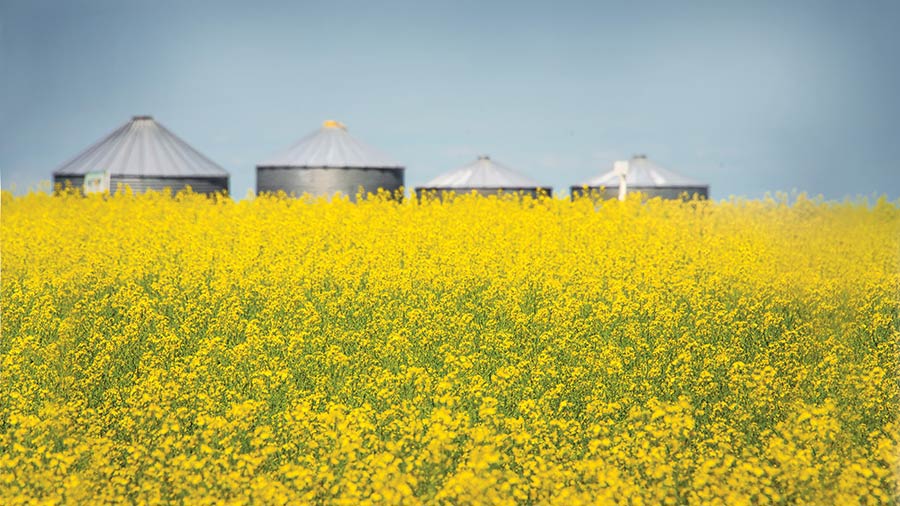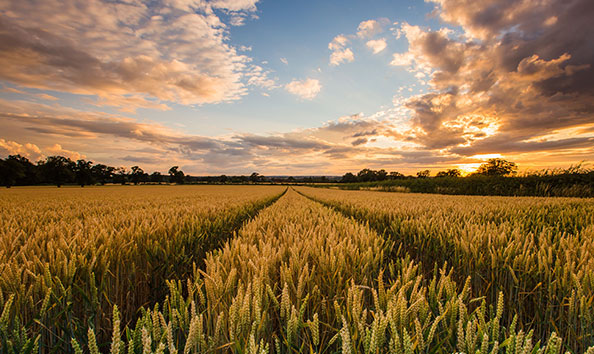Why resilient supply chains, farmers are essential for feeding our growing world
Key Takeways
- Climate variability, economic volatility and geopolitical disruptions are creating serious pressure on how food is produced and distributed.
- Over 600 million farmers provide food for more than 8 billion people, making farmer resilience essential to global food security.
- Cargill’s connected global supply chains, investments in low-carbon shipping solutions and continued support of farmer adoption of regenerative agriculture are key to supporting supply chain resilience.
A resilient food system must adapt to meet evolving global demand.
As the global population grows from about 8.1 billion today to nearly 9.6 billion by 2050, and becomes more urban and affluent, demand for food — particularly protein and supporting crops — is increasing rapidly. This rising demand comes with rising complexity: climate variability, economic volatility and geopolitical disruptions are creating serious pressure on how food is produced and distributed.
Yet, the challenge is not only about quantity. A resilient food system must ensure food is available and affordable for all, while being produced in ways that conserve natural resources and adapt to shifting conditions.
With more than 40 percent of staple crops like corn, wheat and rice crossing borders to meet global needs, trade and logistics are critical. Nations like the United States, China, Brazil and Ukraine play an outsized role — not just feeding their own populations but supplying the world. The future of the food system depends on resilient connections: between farmer and consumer, between surplus and scarcity, and between technology and tradition.
Keeping food moving in a disrupted world: The critical nature of integrated supply chains
Agility is essential in today’s interconnected world. Cargill’s global scale and integrated supply chains allow us to move food quickly and flexibly, even amid disruption. With over 1,600 facilities in 70-plus countries, we have the infrastructure to pivot when weather, politics or markets shift. When drought reduces yields in one region, we can redirect supply from another — helping stabilize markets and ensure continuous flow.
But resilience isn’t just about volume — it’s about how we move food and other vital goods. As global demand grows, the environmental impact of supply chains becomes just as important as their speed and scale. That’s why Cargill is investing in renewable biofuels as part of the transition to low- and zero-emission fuel sources.
Agriculture is central to this shift — not only as a source of feedstock, but as a catalyst for rural innovation and new income streams for farmers. In Western Canada, we’re building a canola processing facility in Regina, Saskatchewan, with capacity to process 1 million metric tons of canola annually. It will produce high-quality vegetable oil for food and renewable fuel markets, and canola meal for animal feed.
In Brazil, we’ve expanded our renewable energy footprint by acquiring full ownership of SJC Bioenergia to meet rising demand in the biofuels market. These investments aren’t just about infrastructure; they’re about finding solutions rooted in agriculture to enable a lower-emission food and transportation system — while also providing critical insights into supply chains that serve multiple demands.

Farmer first: Food system resilience begins with farmer support
At the heart of every meal are the 600-plus million farmers who feed more than 8 billion people. Their resilience underpins global food security. When they thrive, so do communities and economies. That’s why the future of food must be rooted in supporting farmers, especially through regenerative agriculture.
Practices like cover cropping, reduced tillage and smarter nutrient use help improve soil health, retain water, reduce runoff and increase crop durability in the face of climate extremes. These practices also create new market opportunities by linking farmers to growing demand for sustainable commodities.
But adoption isn’t always easy. Barriers include upfront costs, technical gaps and uncertain returns. That’s where Cargill steps in. Through a variety of regenerative agriculture programs across the globe, we’re helping farmers adopt sustainable practices by offering financial incentives, agronomic guidance and tailored support. Farmers like Martin Ferry in France are finding ways to improve both profitability and soil health — balancing economic and environmental goals.
From the soil to the sea, resilience starts on the ground — and must be built into every link of the food system. The pressures we face aren’t distant or hypothetical. They’re here now: volatile weather, shifting markets, resource constraints and rising global demand.
If we want to nourish a growing population, we must act decisively — investing in farmers, scaling climate-smart solutions and strengthening the systems that move food where it's needed most.
The future of food security hinges not on what we hope to do someday, but on what we choose to do today.
From the field to consumers
See how we’re helping create a more food secure world


